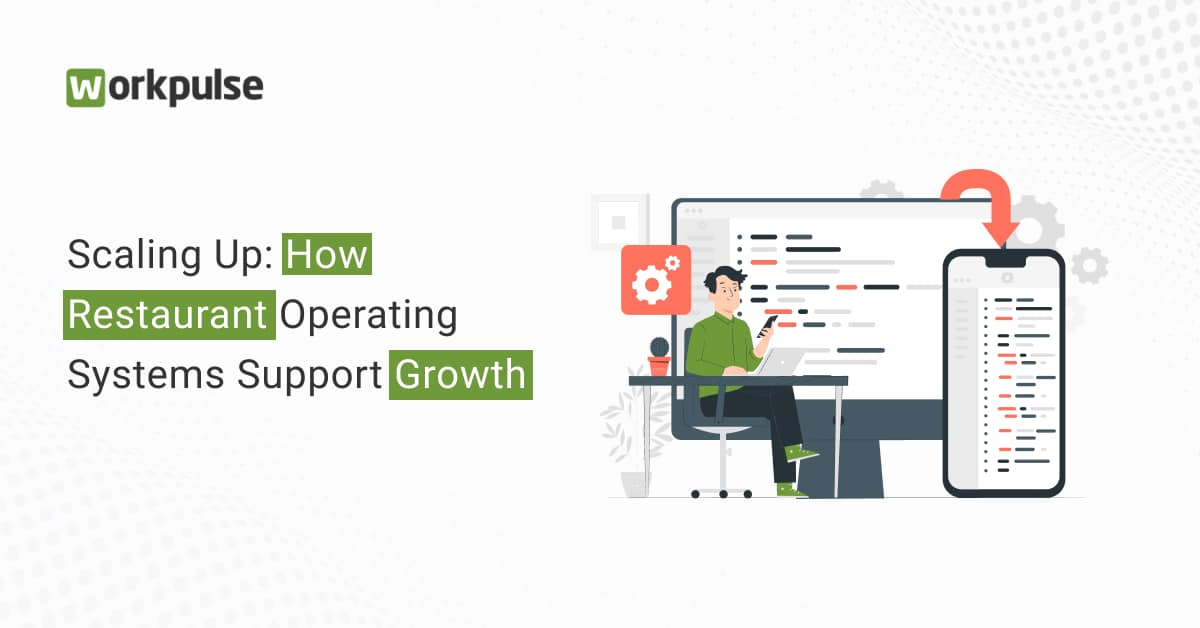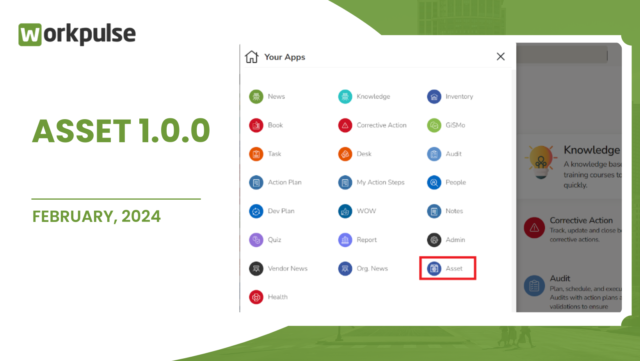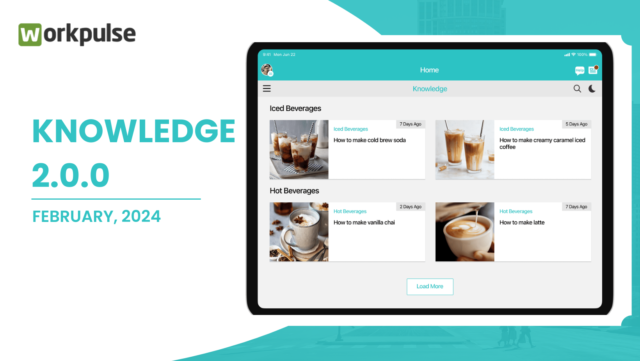In the fast-paced restaurant industry, scaling up operations is both an exciting opportunity and a daunting challenge. As restaurants expand, they face numerous complexities that can hinder growth. However, with the right tools and strategies, scaling up can be a rewarding journey. One such crucial tool is a restaurant operating system (rOS), which empowers restaurants to streamline operations, enhance guest experiences, ensure consistency, and make data-driven decisions. In this blog, we will explore how restaurant operating systems play a pivotal role in supporting growth and maximizing profitability.
What is a restaurant operating system?
An rOS is a digital platform that allows restaurant owners to bring together all their operations, from audit management, food safety compliance, and brand standards management to facilities and equipment management and guest recovery and retention, to one place. It is a comprehensive software solution designed to streamline and automate various aspects of restaurant operations. It serves as a centralized platform that integrates multiple modules and functionalities to enhance efficiency, productivity, and profitability.
A restaurant management system typically includes features such as inventory management, order processing, table reservations, employee scheduling, reporting and analytics, and customer relationship management. It allows restaurant owners and managers to effectively manage day-to-day operations, track sales and inventory, streamline communication, and ensure compliance with industry regulations.
By leveraging a restaurant management system, restaurants can optimize workflows, improve operational efficiency, reduce costs, and enhance the overall guest experience. It provides a robust foundation for running a successful restaurant by streamlining processes, facilitating data-driven decision-making, and empowering staff with the tools they need to deliver exceptional service
With an intuitive user interface, real-time data insights, and automation capabilities, a restaurant management system enables restaurants to focus on what matters most – providing an outstanding dining experience for their guests while driving growth and profitability.
However, can a restaurant operating system support your scalability goals?
A restaurant operating system plays a crucial role in supporting scalability goals by providing the necessary tools and functionalities to efficiently manage and expand restaurant operations. It streamlines processes, improves communication and coordination, and enables data-driven decision-making. By automating manual tasks, optimizing workflows, and centralizing information, a restaurant operating system helps restaurants scale their operations seamlessly. It ensures consistency across multiple locations, enhances guest experience, and facilitates compliance with industry standards and regulations. With real-time performance monitoring and analytics capabilities, a restaurant operating system empowers restaurant owners and managers to proactively identify opportunities for growth, optimize resource allocation, and drive overall operational efficiency. Let’s discuss this in detail:
#1: Streamlining Operations for Efficiency
A restaurant operating system streamlines various operational processes, such as communication, task management, inventory control, and supplier management. By centralizing these operations and automating workflows, it eliminates manual inefficiencies, reduces errors, and improves guest experience.
- Centralized Communication and Collaboration: To ensure smooth coordination and efficient operations, restaurant operating systems serve as a centralized platform for communication and collaboration. Teams across multiple locations can seamlessly share information in real time, improving coordination and minimizing miscommunication. This streamlined communication enhances productivity and allows for faster decision-making, enabling restaurants to navigate the challenges of scaling up.
- Task Management and Automation: Restaurant operating systems streamline task management processes, eliminating manual inefficiencies and reducing errors. Through automation, routine tasks such as inventory management, employee scheduling, and order processing are simplified and optimized. This automation frees up valuable time for staff to focus on critical activities, driving operational efficiency and facilitating scalability.
- Inventory and Supply Chain Management: Effective inventory and supply chain management is crucial for scaling up operations. Restaurant operating systems provide robust features for inventory optimization, tracking ingredient usage, and managing suppliers. By optimizing inventory levels, reducing waste, and ensuring the timely availability of ingredients, restaurants can navigate the challenges of scaling up without compromising on quality or incurring unnecessary costs.
#2: Enhancing Guest Experience
Workpulse rOS assists with enhancing the guest experience by providing features like contacting your guest directly via the app by selecting the email or calling option, assigning guest complaints to the responsible person for quick resolution, delivering proper and professional responses every time with easy-to-use templates, and duly closing all guest complaints with the brand by submitting the required details and action steps for proper documentation.
- Guest Engagement and Feedback Management: Restaurant operating systems enable personalized guest engagement, enhancing the overall dining experience. Through features like guest profiles, preference tracking, and feedback management, restaurants can tailor their offerings to meet individual guest needs. By actively collecting and analyzing guest feedback, restaurants can identify areas for improvement, address concerns, and ensure a memorable experience for every guest.
- Direct Guest Communication: Workpulse rOS allows you to easily contact guests directly through the app, providing options to email or call them. This feature enables efficient communication and timely resolution of guest complaints.
- Assigned Complaints: With Workpulse rOS, you can assign guest complaints to the responsible person for quick and effective resolution. This streamlines the complaint-handling process, ensuring that each issue is appropriately addressed.
- Professional Response Templates: Delivering proper and professional responses becomes effortless with Workpulse rOS’s easy-to-use templates. These templates ensure consistency and provide a standardized approach to guest communication, enhancing the overall guest experience.
- Complaint Closure and Documentation: Workpulse rOS enables you to duly close all guest complaints by submitting the required details and action steps. This ensures proper documentation and allows you to maintain a record of all resolved guest complaints, facilitating continuous improvement and analysis.
#3: Ensuring Consistency and Compliance
With features like temperature recording via brand-approved sensors for zero error recordings and instant alert for critical issues, submitting a photo visual as proof of compliance using merchandising features, defining and executing corrective actions for non-compliant recording, and getting real-time data and compliance reports for all tasks based on location, region, task category or date changes, a restaurant operating system helps you maintain brand standards and food safety compliance throughout.
- Standardizing Processes and Procedures: Scaling up requires maintaining consistency across multiple locations. Restaurant operating systems play a vital role in standardizing processes and procedures, ensuring that each location delivers the same level of quality and adheres to brand standards. By enforcing consistent practices, restaurants can build a strong reputation and enhance guest trust and loyalty.
- Food Safety and Compliance Management: Compliance with food safety regulations is non-negotiable for scaling up operations. Restaurant operating systems provide tools for monitoring and tracking compliance measures, ensuring that each location meets the necessary requirements. By streamlining food safety processes and automating compliance checks, restaurants can confidently navigate inspections and uphold the highest standards of safety and hygiene.
#4: Data Analytics and Performance Insights
Gain valuable insights into your restaurant operations and performance with robust data analytics capabilities. Identify trends, analyze key metrics, and make data-driven decisions to drive continuous improvement and optimize your business.
- Reporting and Analytics: Restaurant operating systems offer comprehensive reporting and analytics capabilities, providing valuable insights into key performance metrics, sales trends, and customer behavior. By leveraging data-driven insights, restaurants can make informed decisions, identify areas for improvement, and optimize operational efficiency. These insights contribute to better financial management and overall performance.
- Real-time Performance Monitoring: Real-time performance monitoring is vital for scaling up operations. Restaurant operating systems enable proactive management by providing real-time visibility into key performance indicators. Managers can monitor metrics such as sales, customer satisfaction, and staff performance, allowing for immediate intervention and adjustment. This real-time monitoring ensures that the restaurant stays on track and can quickly identify and address any issues that may arise during the scaling process.
- Data-Driven Decision Making: Harness the power of data analytics and performance insights to make informed decisions. Analyze key metrics, identify trends, and gain valuable insights into your restaurant operations, enabling you to optimize performance and drive continuous improvement.
- Real-Time Monitoring: Stay on top of your restaurant’s performance with real-time monitoring. Track key performance indicators, receive instant alerts and notifications, and take proactive measures to address any issues that may arise. Make data-backed decisions and ensure your restaurant is always operating at its best.
- Comprehensive Reporting: Access comprehensive reports and analytics to gain a deep understanding of your restaurant’s performance. Visualize data, identify areas for improvement, and leverage actionable insights to enhance efficiency, productivity, and profitability.
Scale up your restaurant operations with Workpulse rOS
In conclusion, scaling up in the restaurant industry requires careful planning, efficient operations, enhanced guest experiences, and compliance with regulations. Restaurant operating systems play a pivotal role in supporting growth by streamlining operations, enhancing guest experiences, ensuring consistency, and providing data-driven insights for decision-making. By leveraging the power of restaurant operating systems, restaurants can confidently navigate the challenges of scaling up, maximizing profitability, and achieving long-term success.
If you’re ready to take your restaurant to new heights, consider implementing a robust restaurant operating system such as Workpulse rOS will support your growth journey.
Explore how Workpulse rOS can revolutionize your operations and drive growth by scheduling a free consultation with our experts today!




